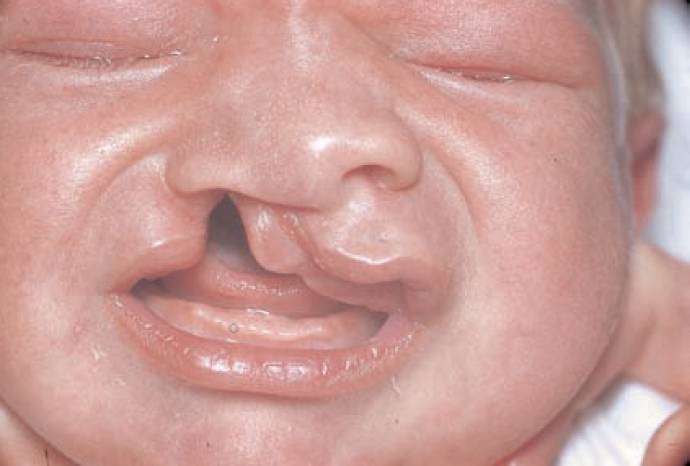This post is an answer to the Case – A Baby With Two Gross Congenital Deformities
What are these lesions called?
Cleft lip and cleft palate. This is the commonest congenital facial abnormality in the UK and there are about 1000 babies born each year with one, either or both of these lesions.
How often, as in this case, do they coexist?
In round figures, 50% of babies have both conditions, 25% cleft lip only and 25% cleft palate only.
Why is it important to carry out a detailed clinical examination of this child?
Of course, you carry out a detailed examination of all your patients! However, specifically here it is important to remember that whenever one congenital anomaly is found, whether in a baby or older patient, a search must be made for other congenital lesions.
Some diseases are well known to be associated with each other, for example, hydrocephalus and spina bifida, duodenal atresia with Down’s syndrome, etc. Babies with a cleft lip and/or cleft palate have some other congenital anomaly in about 10% of cases. Special associations are with spina bifida and with syndactyly (fusion of fingers or toes).
What is the embryological explanation of these two conditions?
- Cleft lip results from different degrees of failure of fusion of the frontonasal and maxillary processes
- Cleft palate results from various degrees of failure of fusion of the palatine processes of the maxilla and the premaxilla – that part which bears the four incisor teeth
What is the immediate problem presented by this palatal defect?
Interference with the normal sucking mechanism. Breastfeeding is unlikely to be successful. A soft plastic bottle is used to squirt the feed – preferably the mother’s expressed breast milk – rhythmically into the baby’s mouth. The infant can swallow the milk normally and, if positioned in the semi-upright position, nasal regurgitation through the cleft palate is minimal.
What should be the further management of this baby?
Well over half these babies are diagnosed at antenatal scan so that the surgical team can meet the parents and give them information about these conditions and the repair protocol. This goes some way to diminish the shock on seeing the newborn child. Surgical repair is performed in a specialized pediatric unit at about 3 months of age. Speech therapy and secondary plastic procedures are carried out as the child grows.

